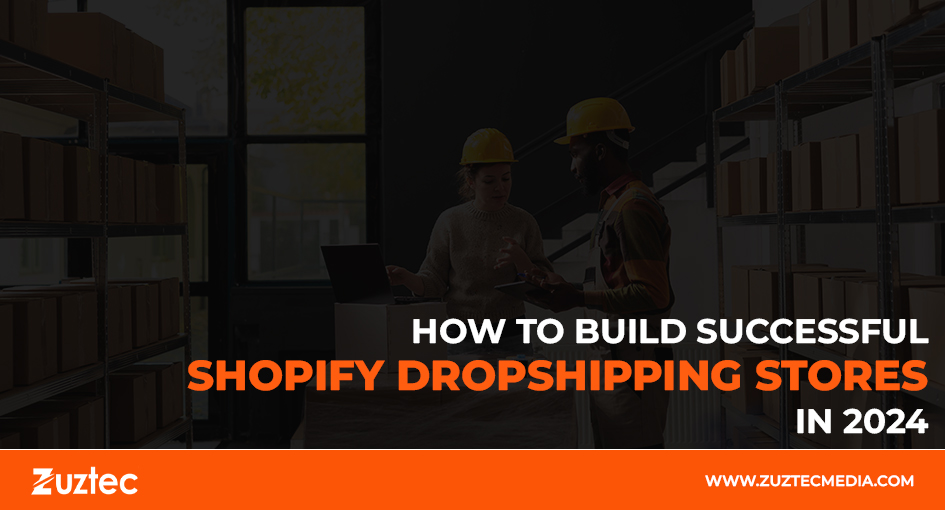
How to Build Successful Shopify Dropshipping Stores in 2024
Building a successful dropshipping business has never been more attainable, especially with platforms like Shopify at your fingertips. As we move into 2024, the e-commerce landscape continues to evolve, offering new opportunities for aspiring entrepreneurs to tap into the lucrative world of dropshipping. Shopify dropshipping stores have gained immense popularity due to their user-friendly interface, extensive app ecosystem, and robust support, allowing even those without technical expertise to create and manage an online store effectively.
However, launching a successful Shopify dropshipping store involves more than just setting up a website and adding products. It requires a strategic approach that encompasses market research, product selection, branding, and marketing. Understanding your target audience and providing a seamless shopping experience are crucial factors that can significantly impact your store’s performance.
In this guide, explore essential steps and best practices to help you build successful Shopify dropshipping stores in 2024. From choosing the right niche and sourcing quality products to optimizing your store for conversions, we’ll cover everything you need to know to establish a thriving online business. Whether you’re a seasoned entrepreneur looking to expand your portfolio or a newcomer eager to dive into e-commerce, these insights will empower you to create a Shopify dropshipping store that stands out in a competitive market. Let’s embark on this journey toward building a successful dropshipping venture!
Understanding the Basics of Shopify Dropshipping Stores
Before diving into the specifics, it’s crucial to understand what Shopify dropshipping stores entail. In a dropshipping model, the store owner sells products without holding inventory. Rather, the business buys the item from a third-party supplier who sends it straight to the buyer when a customer puts an order. This model minimizes risk and overhead costs, making it accessible for new entrepreneurs. To build a successful Shopify dropshipping store, you’ll need to focus on product selection, market research, branding, and marketing strategies.
Steps to Build Successful Shopify Dropshipping Stores
- Choose Your Niche Wisely
Selecting the right niche is one of the most critical steps in building your Shopify dropshipping store. Look for a niche that aligns with your interests and has a viable market demand. Conduct thorough market research using tools like Google Trends, social media platforms, and keyword research to identify potential products that consumers are actively searching for. Aim for a niche with low competition but sufficient demand to ensure your store can stand out.
- Find Reliable Suppliers
The success of your Shopify dropshipping store heavily relies on the quality of your suppliers. Partnering with reliable suppliers ensures that you provide high-quality products and efficient shipping. Platforms like Oberlo, Spocket, and AliExpress are popular for finding dropshipping suppliers. Take the time to vet suppliers by checking reviews, product quality, and shipping times. Establishing a solid relationship with your suppliers can lead to better communication and problem resolution down the line.
- Create an Engaging Store Design
A well-designed Shopify dropshipping store can significantly impact your conversion rates. Choose a clean, professional theme that reflects your brand identity and appeals to your target audience. Customize your store with high-quality images, engaging product descriptions, and easy navigation. Consider incorporating elements such as customer testimonials and clear calls to action to enhance the user experience. Remember, first impressions matter, so invest time in creating an aesthetically pleasing and functional online store.
- Optimize for SEO
For your Shopify dropshipping store to receive organic traffic, search engine optimization, or SEO, is essential. To increase your exposure in search engine results, use important keywords into the descriptions, photos, and titles of your products. Create valuable content, such as blog posts or guides related to your niche, to attract potential customers and establish authority in your field. Utilizing SEO best practices will help you reach a broader audience and increase your chances of converting visitors into buyers.
- Implement Effective Marketing Strategies
Marketing is essential for attracting customers to your Shopify dropshipping stores. Leverage various digital marketing channels to promote your products, including social media, email marketing, and paid advertising. Platforms like Instagram and Facebook are particularly effective for visual products, allowing you to showcase your items to a wider audience. Consider running targeted ads to reach potential customers who fit your target demographic. Building an email list is also vital; use it to send promotions, product updates, and personalized recommendations to encourage repeat purchases.
- Monitor and Analyze Performance
Once your Shopify dropshipping store is up and running, it’s crucial to monitor its performance regularly. Utilize tools like Google Analytics and Shopify’s built-in analytics to track key metrics, such as traffic, conversion rates, and customer behavior. Analyzing this data will help you identify areas for improvement and refine your strategies over time. Stay adaptable and willing to make changes based on what the data reveals to ensure your store remains competitive and profitable.
In the end, building successful Shopify dropshipping stores in 2024 involves careful planning, strategic execution, and ongoing optimization. By choosing the right niche, partnering with reliable suppliers, designing an engaging store, and implementing effective marketing strategies, you can create a thriving online business. Continuous monitoring and analysis of your store’s performance will allow you to adapt to changing market conditions and customer preferences. With dedication and the right approach, your Shopify dropshipping store can become a profitable venture that stands out in the competitive e-commerce landscape.

